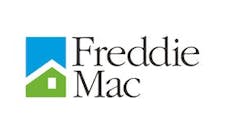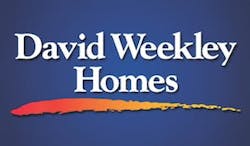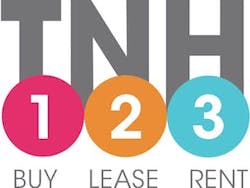Market Update: PB April 2013
Millennials prefer small and smart
Ask the Millennial generation which kind of house they would buy, and they’ll probably tell you it wouldn’t be anything like mom and dad’s place.
In a national survey released by Better Homes and Gardens Real Estate, 77 percent of 18-to-35-year-olds preferred a smaller “essential” home over the stereotypical luxury house favored by their Baby Boomer parents. Instead of a dining room, they would opt for a home office and replace the living room with a home theater. Rather than stuff a second oven into the kitchen, 59 percent would use the extra space for a TV screen. Forty-one percent said they would brag to a friend more about a home automation system than about a newly renovated kitchen.
Smart technology is even more attractive than curb appeal. Eighty-four percent of Millennials polled believe that technology would be essential to have in their homes and if the house was not up to date with the latest capabilities, 64 percent said they would not consider living there. The most sought-after tech items were an energy-efficient washer and dryer (57 percent), security system (48 percent), and smart thermostat (44 percent).
Millennials, defined by Pew Research Center as people born from 1981 to 2000, are the second largest generational group behind Baby Boomers and wield about $170 billion in annual purchasing power, according to comScore, a digital marketing consultancy. However, that figure may not square with tough economic times, as this generation is besieged with unemployment, underemployment, and carries about $45,000 in average debt, mostly college loans, according to a PNC Financial Services study, Consequently, this group has delayed getting married, starting a family, and making major purchases.
FHFA sets Fannie and Freddie reforms
With dim hopes for any housing finance policy reform emerging from Congress soon, Federal Housing Finance Agency Acting Director Edward DeMarco might have taken the most tangible step yet toward restructuring Fannie Mae and Freddie Mac.
DeMarco announced a plan to create a new entity that would take over some of the functions currently handled by the two government-sponsored enterprises. The business initially would be owned and funded by Fannie Mae and Freddie Mac, but would operate with its own chief executive officer and chairman of the board. The venture also would be physically located in a separate building.
“Its functions are designed to operate as a replacement for some of (Fannie and Freddie’s) legacy infrastructure,” Demarco said during a speech last month in New York. “However, the overarching goal is to create something of value that could either be sold or used by policy makers as a foundational element of the mortgage market of the future.”
The new business is part of a plan to reduce Fannie Mae and Freddie Mac’s presence in housing finance and have private investors assume more risk in the mortgage securities market. Other elements include shrinking the unpaid principal balance amount of both entities’ new multi-family business by at least 10 percent through limiting product offers, adjusting pricing, and tightening underwriting. On the single-family mortgage front, the agency set $30 billion as the target this year for unpaid principal balances in credit risk sharing transactions. In all, FHFA aims to cut the retained portfolio balance of all assets this year by 5 percent.
While the goals are guidelines rather than binding mandates for Fannie Mae and Freddie Mac, the Mortgage Bankers Association (MBA) responded that such plans without a broader framework create more uncertainty.
“The concept of a single securitization platform…highlights the need for a transparent, comprehensive discussion among policymakers and other stakeholders about the future of the GSEs and the government’s role in the housing markets,” MBA said in a statement.
New arrivals migrate to home ownership
The increase in home ownership among immigrants during the last decade probably prevented the housing slump from becoming even worse, according to a report sponsored by the Mortgage Bankers Association’s Research Institute for Housing America.
The study also projects that foreign-born home buyers will account for 32.2 percent of the growth in all households from 2010 to 2020 and 35.7 percent of the increase in homeowners.
The volume of foreign-born homeowners increased steadily during the previous three decades, rising from 800,000 additional owners in 1980-1990 to 2.1 million more home buyers in 1990-2000, and 2.4 million more in 2000-2010. The number of immigrant homeowners is predicted to grow by 2.8 million during 2010-2020, with most of those gains occurring in California, New York, New Jersey, Massachusetts, Connecticut, and Michigan.
Hispanic residents who arrived here in the 1980s have created a sizable pool of prospective buyers who will reach ages 25 to 34 by 2020, the common age of entry to the housing market, according to MBA. The home ownership rate within this group is predicted to hit 61 percent by the end of the current decade, compared with 53 percent in 2010 and slightly more than 15 percent in 1990.
The expansion of ownership among foreign-born residents helped offset the smaller volume of native-born demand passing through the entry-level housing buyer stage during the decade ending in 2010. The dip in native-born households was attributed to the Great Recession and a smaller population of that group reaching the home-buying age. However, native-born homeowner prospects are expected to grow by 5.1 million in the current decade, reflecting new growth in the population of young adults and buyers 25 years and older entering the market.
Toll Brothers to build near Denver
Toll Brothers, Inc., will expand its active-adult Active Living brand to the western United States by contracting to buy lots at Anthem Ranch, an adult community in Broomfield, Colo.
Toll intends to acquire 387 lots in the 800-acre community located just a 25-minute drive from Denver International Airport. Anthem Ranch is part of a larger master-planned community known as Anthem, Colorado, which has seen nearly 1,400 homes built since opening in 2006. The community was once a Del Webb development until Oread Capital, based in Broomfield, and Wheelock Street Capital, Greenwich, Conn, acquired it in 2011.
Toll Brothers plans to build in a neighborhood that will be identified as “Anthem Ranch by Toll Brothers.” The home builder will offer 12 to 15 different floor plans ranging in size from 1,500 to more than 3,000 square feet, with base home prices ranging from the low $300,000s to the upper $400,000s. The company expects to open for sale in May 2013 with the grand opening of its model home park slated for January 2014.
Toll Brothers, Horsham, Pa., launched its Active Living product in 1999 and has since completed or has in development more than 10,000 homes in over 50 active-adult communities catering to 55-plus year-old-buyers in 10 East Coast and Midwest states.
Weekley Homes expands to Salt Lake City
David Weekley Homes will move into its 18th major metro market by breaking ground this May in South Jordan’s Daybreak Community, Utah’s largest master-planned community.
The Houston-based builder will construct three single-family detached home products in two neighborhoods, Creekside and Lakeside villages. In Creekside Village, the home builder will sell cottage court-style homes ranging between 1,200 and 1,650 square feet and priced from the low-to-mid $200,000s. Creekside also will feature 60-foot long sites with 1,800-to-2,300-square-foot homes priced from the high $200,000s to the low $300,000s, according to Weekley Homes. Lakeside Village will feature 2,000-to-2,400-square-foot homes with mountain and lake views on 60-foot long sites and prices in the mid-to-upper $300,000s.
Daybreak is developed by Kennecott, a division of Rio Tinto Group, which owns 93,000 acres of the site. Approximately 3,000 housing units have been built since the community opened in 2004, and 20,000 units are slated to be completed by 2020. It is among the first communities of that size to adhere to Energy Star standards.
“We recognized an outstanding opportunity to be a builder there,” said David Weekley, chairman. “We were attracted by the quality of the developer. They’re a large organization; they have consistent financial backing; they have lots of land, and [they have] a great team in Salt Lake City. They have high quality people and that is who we want to be doing business with.”
Lots are in the process of being purchased, so Weekley declined to say how many homes his company intends to build. Rather he described Weekley Homes’ commitment as building 10-20 years’ worth of lots as long as land is provided for use. During the past 10 years, master-planned communities generated 58 percent of Weekley Homes’ revenue, which exceeded $624 million in 2011 alone, according to Professional Builder’s Housing Giants survey last year.
Leasing homes attracts buyers for RSI
Tight banks and bad credit pushed many prospective home buyers out of the market, but RSI Development’s lease-to-own program not only moved occupants into brand new single-family houses; it also helped the builder sell out its properties in Beaumont, Calif.
The Newport Beach, Calif.-based builder launched the TNH 123 Program last May, offering families three options for living in its newly built homes: buying, renting, and lease-to-own. Within six months, more than 40 percent of prospects signed on to the lease-to-own option, about 50 percent purchased, and a small minority opted to rent. The company’s Inland Empire community is just about sold out, and the flexible options provided a “good kick start” for attracting occupants to the community, said Joleene Armbruster, director of marketing for RSI Development.
“There were a high level of foreclosures in the market. We had this brand new community that we were going to launch, but most homeowners when they go to a community don’t want a vacant home sitting next to them,” said Armbruster. “It attracts vandalism and doesn’t feel like a complete community. [TNH 123] was a way for us to fill the community and help people along the way get into a new home.”
TNH 123 targeted a market that was flush with consumers who earned enough income to make housing payments but didn’t have a down payment and could not secure a loan because of bankruptcy or foreclosure. The name of the program—developed in conjunction with marketing strategist Cecilian Worldwide—plays off the affordable, modular-built, energy-efficient product branded by RSI as “The New House.” RSI builds these homes in 90 days or less, and prices range between $149,000 and $214,000.
Lease-to-own customers pay a monthly rent plus an extra $257 to $366, depending on the model, to be applied toward the down payment. The family has three years to decide to buy the home. Monthly rents start as low as $1,450. All occupants receive front and back yard landscaping and mechanical systems maintained by RSI, as well as the installation of window coverings.
Market conditions have since changed and RSI retired TNH 123 about three months ago because more buyers than prospects for renting or leasing are checking out RSI’s The New Home community in San Jacinto. Beaumont, with 77 single and two-story Spanish, Prairie, and Craftsman style homes, is just about sold out. The sizes of the homes range from a 1,232-square-foot three-bedroom and two-bath floor plan to a 2,401-square-foot, four-bedroom and three-bath floor plan plus den.
The San Jacinto community features 16 single and two-story Spanish, Prairie, and Craftsman style homes located at the base of Park Hill near San Jacinto’s historic downtown. The size of the homes ranges from a 1,585-square-foot, three-bedroom and two-bath garage floor plan to a 1,968-square-foot, four-bedroom and three-bath floor plan.






